Rewilding with synthetic creatures could "save nature" says Alexandra Daisy Ginsberg
Synthetic living creatures would be released into the wild to save endangered species and clean up pollution under this futuristic proposal by designer Alexandra Daisy Ginsberg.
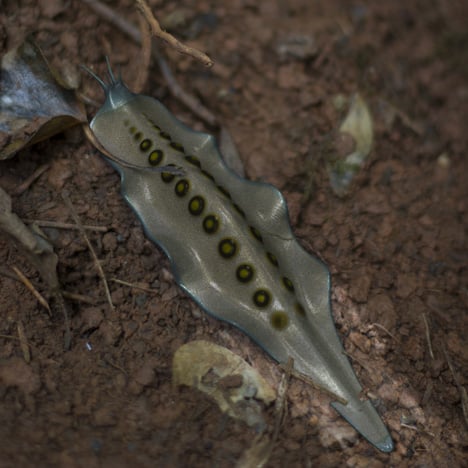
Called Designing for the Sixth Extinction, the project is designed to trigger debate about how artificial organisms could be used to solve environmental problems.
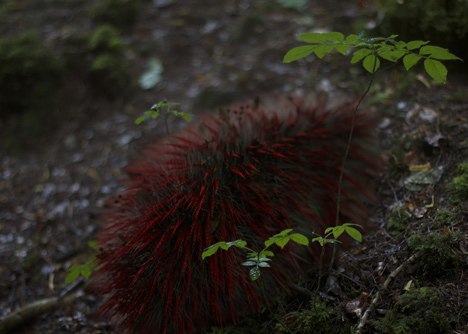
"I'm looking at how we could do rewilding using synthetic biology," said Ginsberg. "The idea is that we could preserve or maintain a state of nature using synthetic organisms that are designed to save other species."
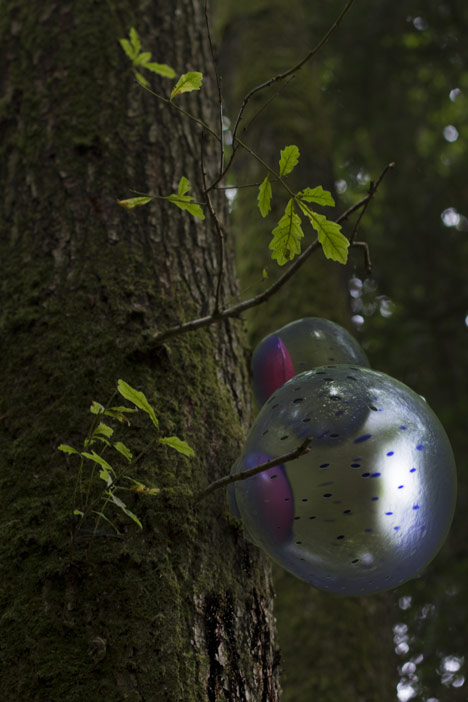
Ginsberg has proposed four new species, including a slug that leaves a trail of alkali to neutralise acidic soil, and a porcupine with sticky rubber spines that would help disperse seeds of threatened plants.
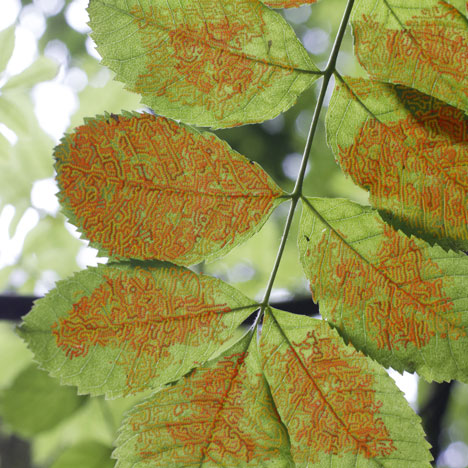
There is also an artificial puffball that kills tree-damaging pathogens when it bursts; and a biofilm that grows on leaves and absorbs pollutants and viruses, safely removing them when the leaves fall in autumn.
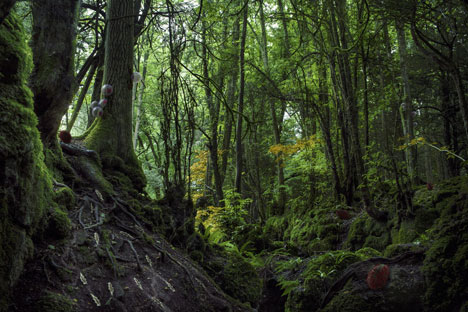
The creatures would be designed, patented and produced by corporations in the same way that industrial products are developed today. The corporations could use the creatures as a form of "biodiversity offsetting", to make up for environmental damage caused by their activities.
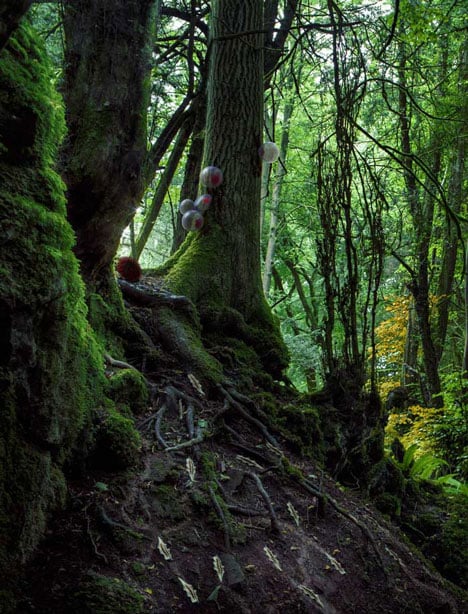
"The idea is [to ask whether we could] be designing organisms like we're designing products now to do something like save nature," Ginsberg told Dezeen.
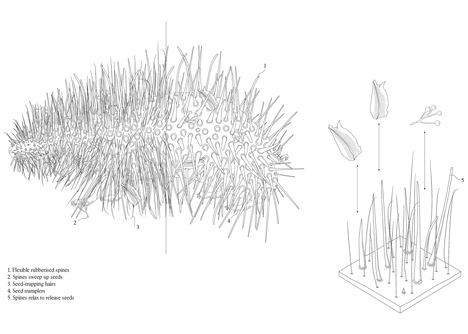
The creatures would be engineered to contain a genetic "kill switch" that would prevent them from over-breeding and creating new environmental problems.
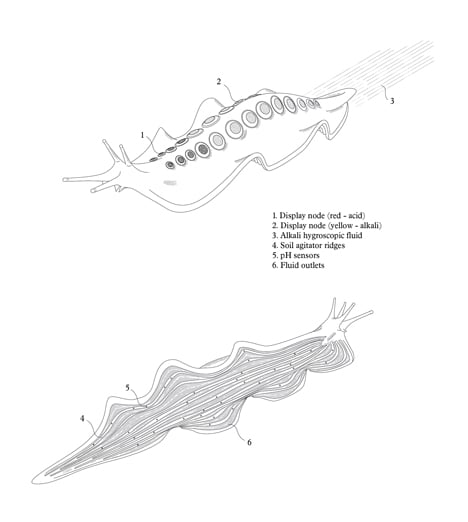
The project was developed for an exhibition co-curated by Ginsberg about synthetic biology called Grow Your Own… Life After Nature at the Science Gallery Dublin.
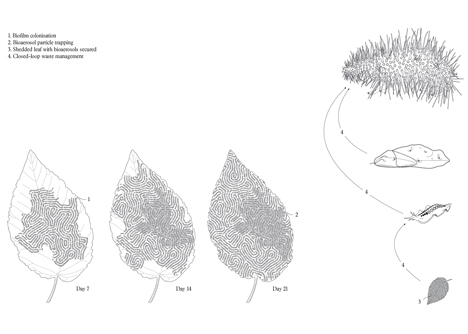
The exhibition, which opened last week and runs until 19 January 2014, presents a series of installations by designers, artists, scientists and others that explain and provoke debate about synthetic biology - an emerging discipline that involves designing and creating biological products.
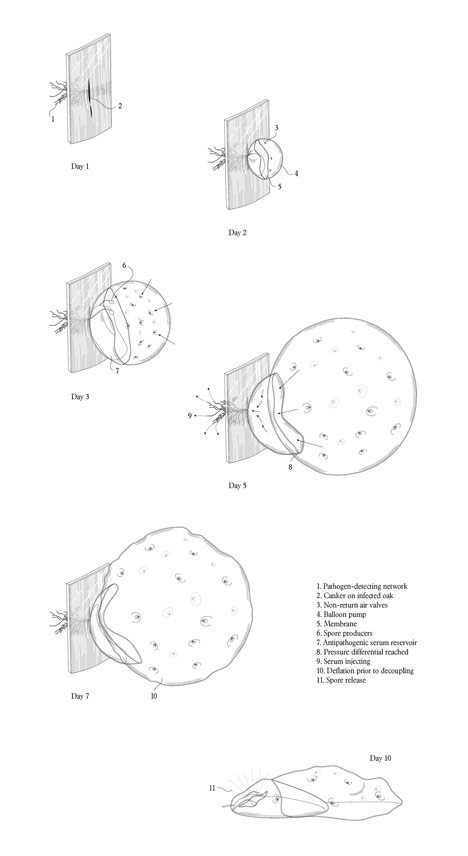
Ginsberg explained the principles behind the discipline in a video interview we recorded at Design Indaba in Cape Town earlier this year.
Ginsberg said that the ideas explored in her installation are plausible. "There's a scientist who I showed this to and she said it's already happening," Ginsberg said. "It's happening not at the level of organisms but with bacteria; the concept of releasing things into the wild to preserve nature. This is not a hidden new world, it's actually happening."
Here's an edited transcript of the interview with Ginsberg:
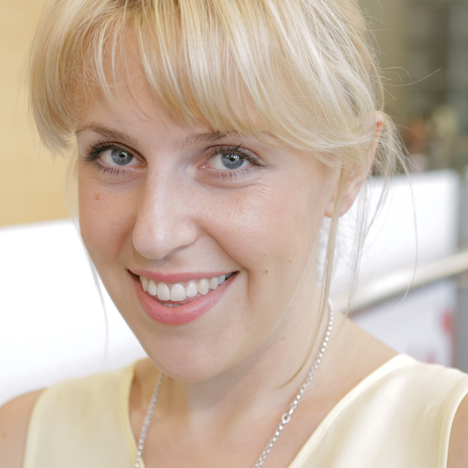
Marcus Fairs: Tell us about the project.
Alexandra Daisy Ginsberg: This project is called the Sixth Extinction and its commissioned for Grow Your Own… Life After Nature at the Science Gallery Dublin, [an exhibition] about synthetic biology. The project is investigating the relationship between biodiversity, conservation and synthetic biology.
At the moment some conservationists argue that at the moment we're undergoing the sixth extinction period. So the dinosaurs dying out was one of them, and number six is human-caused: the death of mammals and biodiversity.
I went to a conference at the beginning of this year called the Future of Nature where the conservation community had come to the synthetic biology community and said: we need to talk. Can we actually design organisms that could help biodiversity? So I was really interested in how this could be a design brief in itself - of making this relationship clearer.
So in this future scenario, I'm looking at how we could do rewilding using synthetic biology. The idea is that we could preserve or maintain a state of nature using synthetic organisms that are designed to save other species. So there are four different species that would be potentially designed by scientists and patented by corporations, maybe as part of biodiversity offsetting, so [they're] ruining environments somewhere else but releasing these things to preserve nature.
Marcus Fairs: What are the creatures you're proposing?
Alexandra Daisy Ginsberg: We've got four different things. These [pointing at the image of the forest] are bio-remediating slugs that reduce acidity levels in the soil to make it more hospitable. Soils get really acidic due to pollution; their slug trails are very alkali and they neutralise the soil.
The puffball-type mushrooms are actually membrane pumps that would suddenly erupt on the tree thats been infected with the pathogen that causes sudden oak death. So they're very carefully designed pumps which would then inject serum into the tree.
The little creatures like porcupines or hedgehogs are mobile seed-dispersers. Their rubbery spines catch seeds in their fur and disperse them around.
In the distance you see that some of the leaves are yellowish and that's a film-like infection on the trees that's trapping glutens.
The idea is [to ask whether we could] be designing organisms like we're designing products now to do something like save nature. In the exhibition, all the organisms are described with patent application descriptions so it's very instrumentalised. We don't talk about these as living things; they're really machines. So they're really opening up that whole space that hasn't really been explored very much yet about what it might be like to preserve whilst inventing.
Marcus Fairs: So in this scenario, how do these creatures come into being?
Alexandra Daisy Ginsberg: They've been invented in a laboratory; designed, tested and released. So I've designed them to work in closed ecological ecosystems. Under the patent applications you see that each one has a kill switch designed into it so it can only copy itself a number of times and then it dies.
Marcus Fairs: So they can't take over?
Alexandra Daisy Ginsberg: No. The idea is that we would have this perfect synthetic nature existing, one to save the other and whether that's actually possible is up for debate.
Marcus Fairs: How plausible is this?
Alexandra Daisy Ginsberg: There's a scientist who I showed this to and she said it's already happening. It's happening not at the level of organisms but with bacteria; the concept of releasing things into the wild to preserve nature. She said you're too close to reality.
I'm not proposing this as the future but it's meant to highlight these questions. It's a vehicle to highlight these questions as a design project and now the idea is to take it back to scientists and start the conversation going.
Marcus Fairs: This scenario is about the natural world; what about the human world? Could we invent creatures that look after us?
Alexandra Daisy Ginsberg: Well this is research that's going on. There is research already going on into bacteria that serve as hard drives, that can store data. It's never going to compete with a silicon computer but that it can go into a completely different space like our bodies. The therapeutics of the future would be little mini biological hard drives that can actually count how many times your cells divide, to work out if you have cancer. to novel probiotics,
I imagine that's what will come first, drinking stuff whether it makes our poo smell good or whether it has novel health properties. We already eat so much that is genetically modified that we don't know about. This is why this is a really interesting space to open up because if you're a vegetarian, you're eating GM all the time because probiotics are produced by bacteria. This is not a hidden new world, it's actually happening.